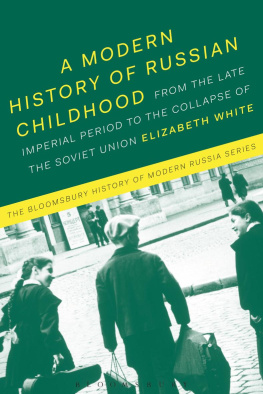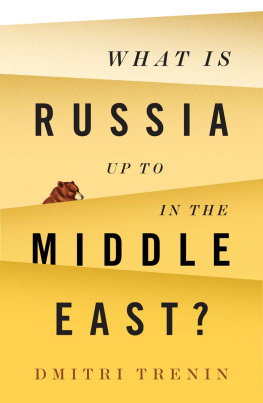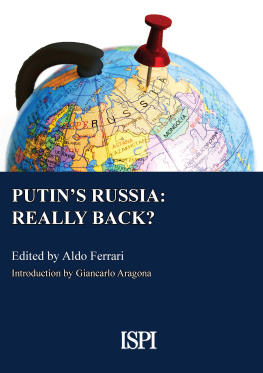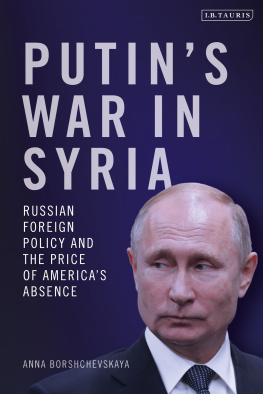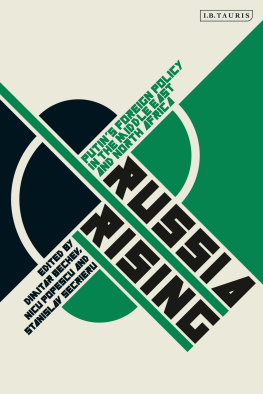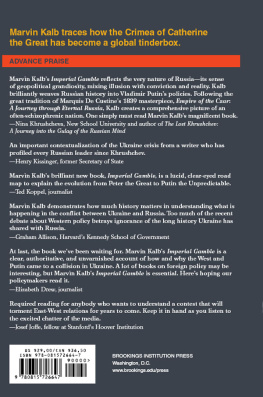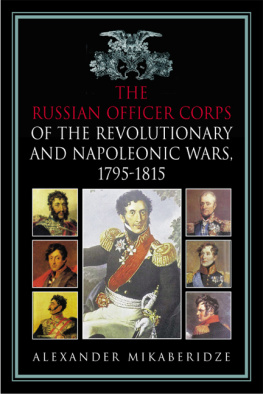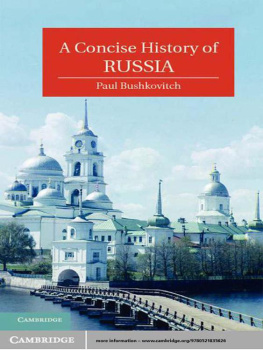It would not have been possible to write this book without the help of a number of individuals.
First of all, I would like to thank Prof. Dominic Lieven for his helpfulness and encouragement throughout this study. His supervision provided me with invaluable academic insight and guidance. I would like to extend thanks to my former colleagues at the International History Department at the London School of Economics and Political Science and Istanbul Altnba University. I always feel very lucky to be part of such intellectually stimulating and socially supportive communities since the early stages of my academic career.
I owe thanks to the staff of Istanbul Archaeological Museums, especially Havva Ko, for making the marvellous museum library available for me. I also would like to express my gratitude to the staff of the St Petersburg Branch of the Archive of Russian Academy of Sciences.
I would like to thank Prof. Peter Holquist from the University of Pennsylvania and Prof. Hakan Krml from Bilkent University for their valuable academic support since the first years of my academic career. For a young researcher, it is a gift to work with such inpiring historians. I should also thank Prof. Simon Dixon and Prof. Peter Waldron for their constructive suggestions during my PhD defense a few years ago. These suggestions ultimately shaped this book.
I should also extend my gratitude to the editorial team at I.B. Tauris, who eventually made this book a reality and helped make my dream come true.
On a personal note, I would like to thank all the wonderful people I met in Ankara, Istanbul, London, Philadelphia and St Petersburg, who supported me in one way or another during the research and writing phases of this book. I am incredibly lucky to have so many great friends who shared their wisdom with me when I needed it. These friends are too many to name, but they know who they are.
Finally, I cannot find the right words to thank my family. This book could not be written without their love and encouragement. My gratitude to them knows no bounds. It is to them this book is dedicated.
But no physical object or trace is an autonomous guide to bygone times; they light up the past only when we already know they belong to it. Memory and history pin-point only certain things as relics; the rest of what lies around us seems simply present, suggesting nothing past.
In May 2016, the famous Mariinsky Symphony Orchestra of St. Petersburg organized a classical music concert in the famous Roman theatre of the ancient city of Palmyra, which was recently liberated from the destruction of ISIS, or the so-called Islamic State by the forces of the Russia The concert, which was named With a Prayer from Palmyra: Music Revives the Ancient Walls, was a celebration (and an obvious PR campaign) of the victory of the Syrian and Russian forces in the Syrian Civil War. The implicit message behind the spectacle was a clash between the civilized and uncivilized, and Russia naturally appeared as the redeemer of civilization by saving the ancient monuments of Palmyra from further destruction at the hands of militants.
Russias relationship with the ruins of Palmyra, or antiquities in the Near East in general, did not start in the 21st century with the Syrian Civil War. In fact, archaeologists of the Russian Empire were conducting studies in Palmyra and in other ancient cities across the Near East already in the late 19th century. Just like it is in contemporary politics, back in the 19th century, ancient history was already a stage for imperial rivalry and great power politics. Hence, the discovery and protection of archaeological artefacts were regarded as signs of imperial prestige and triumph of civilization.
On the Ottoman side, foreign archaeological activities were regarded with suspicion especially in the late 19th century. In an attempt to preserve its vulnerable sovereignty, Ottoman Empire closely monitored foreign archaeological activities on its territories. For the Ottoman Empire, archaeology was also a way of projecting its image as a modern, Westernized empire. For both Russian and Ottoman archaeologists, European scholarship was regarded as an example that should be followed, and a rival at the same time.
The 19th century was marked by the institutionalization of archaeology as a scientific discipline, particularly in Europe.
The creation of schools of archaeology in cities such as Cairo and Athens mirrored the political competition between major European powers. The success of archaeological activities was increasingly associated with national and imperial prestige. National museums in the imperial capitals became the visual representations of the territories each empire held under its control, while overseas archaeological institutes became the physical embodiments of their imperial presence in the given territory.
Around the same time, touristic trips to ancient cities and museums gradually became a part of leisure for European upper classes, who wanted to flee modernity into realms of alternative imagination. The first Grand Tourists of the 18th and early 19th centuries were members of the European upper classes, but with the growth of mass tourism in the late 19th century, middle classes joined them. and the Near East, European travellers recorded their observations with the help of photographs, travel diaries, and guidebooks, and recreated the ancient past through a Western lens. The preoccupation of different segments of the society with ancient history meant that re-creation of the past in a modern context was not only an official project initiated by the state, rather, it was simultaneously influenced both from above by the state and from below by individuals.
Intensive European archaeological involvement in other part
The Russian Empire joined the competition over the ancient world as a latecomer. The choice of location for the first overseas Russian archaeological institut
This study will explore Russian archaeological practices in the Ottoman Empire through the prism of a scholarly institution, the Russian Archaeological Institute in Constantinople ( Russkii Arkheologicheskii Institut v Konstantinopole , hereafter as RAIK), which operated between 1895 and 1914. Established under the administrative structure of the Russian Embassy in Istanbul, the institute occupied a place at the intersection of science and politics. Focusing nearly exclusively on Byzantine and Slavic antiquities in the Ottoman Empire, the activities of the institute reflected the imperial identity of Russia at the turn of the century. As was explicitly expressed by Russian diplomats, bureaucrats and scholars, the establishment of an archaeological institution in the Ottoman capital was regarded as a foreign-policy tool to extend Russias influence in the Near East, a tool of soft power in modern parlance. At the time of its existence, RAIK contributed significantly to the development of Byzantinology with its numerous excavations and publications. Russian archaeologists had to close down their office with the outbreak of the First World War. The complications that arose with the disintegration of the institute were solved only in the late 1920s between the Soviet Union and Republican Turkey, under completely different political circumstances.
The relationship between ancient monuments, archaeological practice and politics attracted the attention of scholars of history and archaeology in recent years. The subject was covered from a variety of perspectives: scholars questioned how archaeological knowledge was used in the nation-building process in different parts of the world from Southeast Asia to Western Europe, or how knowledge production influenced centreperiphery relations in colonial settings. The development of archaeology in the Ottoman Empire, both as a local Ottoman practice and in terms of foreign archaeological activities on Ottoman territories also received considerable attention. Although there has been a great deal of interest in the political aspects of the archaeological activities by British, French and other Western European nations in the Near East, Russian archaeological activities did not receive the same level of interest.




